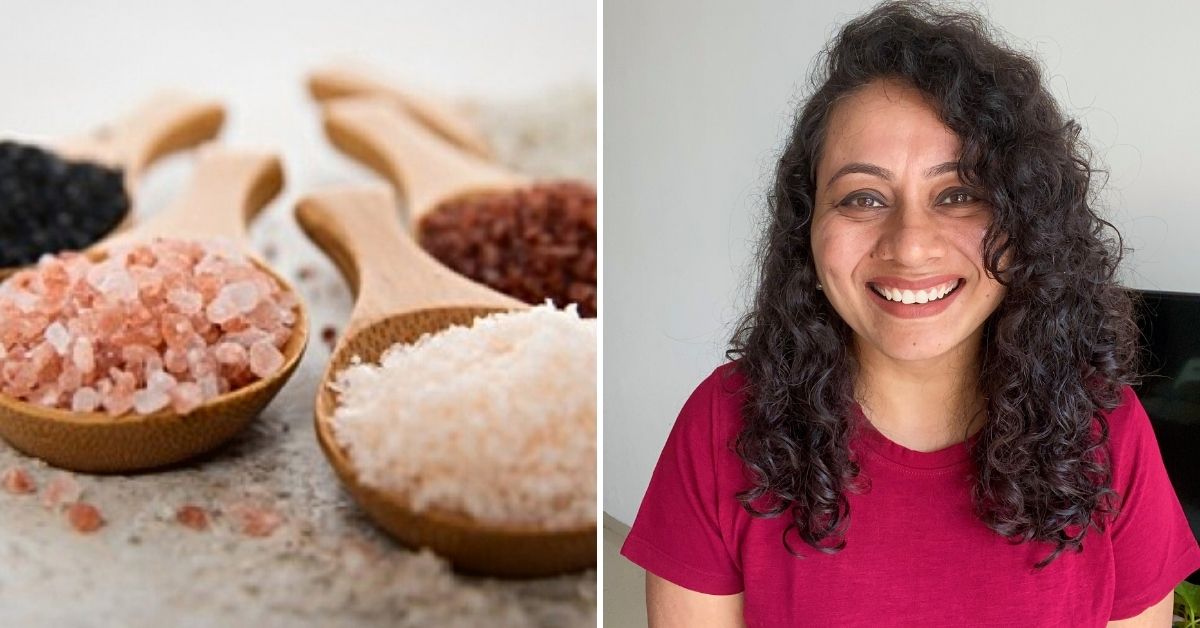Black Salt, Pink Salt, What Salt? Nutritionist Breaks Myths on Salt & Health
Should you switch to black salt or pink salt? Nutritionist Amita Gadre breaks myths and lays down facts about choosing the right salt.

We Indians rarely eat a dish without salt in it!
A versatile ingredient, salt aka sodium chloride not only enhances food’s flavour but also holds several health benefits. The mineral is essential for human health to maintain plasma volume and good metabolism, and regulate body water content and electrolyte balance. It also helps the transmission of nerve impulses and maintains normal cell function.
However, excessive consumption of salt could result in serious health problems like hypertension and cardiovascular diseases.
Today, a variety of salts are available in the market that comes in different colours and textures, each claiming to have different properties. From pink salt to black salt, it can be confusing to understand which salt variety would work best for our health.
There are many who glorify the usage of these salts. But, Amita Gadre — a Pune-based nutritionist, is trying to break such myths through her Instagram video, where she lists out five important facts about salts backed by science.
Amita starts with her insight into the content of different varieties of salts. She says, “Irrespective of the colour of the salt — be it pink, grey, yellow or white, it is all sodium chloride and has the same effect on blood pressure.”
She points out that eating any coloured salt does not help to improve digestion, lose weight or improve gut health.
Be it salt of any colour, she highlights that one should not consume more than one teaspoon per person per day.
Amita further says that white common salt is iodised for a reason, and it is meant for providing iodine content, which is difficult to gain from the standard Indian diet.
“Most of the pink salts, mineral salts or rock salt that you get in the market today are non-iodised, and eating non-iodised salt can actually put you at risk for hypothyroidism,” she concludes.
Edited by Pranita Bhat; Video credit: Amita Gadre (@amitagadre on Instagram)
This story made me
- 97
- 121
- 89
- 167
Tell Us More
We bring stories straight from the heart of India, to inspire millions and create a wave of impact. Our positive movement is growing bigger everyday, and we would love for you to join it.
Please contribute whatever you can, every little penny helps our team in bringing you more stories that support dreams and spread hope.


















